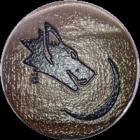Bienvenue invité ( Connexion | Inscription )
  |
| gillesdrone |
 4 Jul 2013, 08:11 4 Jul 2013, 08:11
Message
#1
|

Messages : 6,185 Inscrit : 24/03/07 Lieu : Sendets 64320 Membre n° 1,668 |
Hier on a fait des essais de NAV ADF et ILS
ADF il s’avère qu' on avait toujours du mal a comprendre pourquoi cela,marchait de temps en temps ou pas . le Switch ADF sur le panel gauche est inversé !! quand il est sur ADF en fait il passe sur la freq VHF2 qui est celle affichée sur les molettes Data link pour passer sur l'ARK 22 ( sélection freq ADF ) il faut qu'il soit en bas et là on a bien le vecteur du HSI qui se positionne si on est sur AM et ANT on aura le signal sonore pour le ILS : il faut donc mettre la freq ILS sur les molettes datalink passer sur " ADF " ( switch inversé je rapelle ) si on est loin et trop bas on aura un signal audio faible à partir de 50 Km sur AM et le vecteur HSI sera bien calé par exemple pour Sochi , on passe le HSI en manuel, on met le vecteur Course sur 24 ( piste ILS ) en venant du SUD on s'approche par la mer , quand le vecteur est au gisement 90 on overshoot et on prend la 06 en main droite , puis en base et quand on est aligné sur 24 on a le vecteur et la course calés par contre le ADI reste avec drapeau , pas de mouvement des glides , seul un petit triangle sur le coté droit est sensé nous montrer la correction altitude , vari mais a contre sens si au sol on fait test ADI on a bien les barres de glide qui bougent voilà si quelqu'un veut refaire le test prendre SOchi comme aéroport arrivée car il a un ILS 111.100 pour l'ADF vérifier sur le tableau de droite --------------------
 http://gilles.guesnel.free.fr ma chaine  menacer l' Ours dans son repère, l' Aigle pourrait y laisser quelques plumes |
| Pétardo |
 5 Jul 2013, 23:27 5 Jul 2013, 23:27
Message
#2
|

Indicatif : RW-07 Messages : 101 Inscrit : 8/02/13 Membre n° 4,001 |
Après avoir lu la doc page 6-16 les lignes blanches de l'ADI ne sont ni une indication glide slope ni le localiser. Le Ka-50 ne semble pas avoir un instrument adequate.
Pareil pour les indicateurs triangulaire orange sur le coté gauche. Ce message a été modifié par Pétardo - 5 Jul 2013, 23:28. --------------------
 |
| gillesdrone |
 6 Jul 2013, 09:57 6 Jul 2013, 09:57
Message
#3
|

Messages : 6,185 Inscrit : 24/03/07 Lieu : Sendets 64320 Membre n° 1,668 |
Après avoir lu la doc page 6-16 les lignes blanches de l'ADI ne sont ni une indication glide slope ni le localiser. Le Ka-50 ne semble pas avoir un instrument adequate. Pareil pour les indicateurs triangulaire orange sur le coté gauche. pourtant au vu de ça cela devrait fonctionner non? même si ce n'est que pour la route vu qu'on lui mets la freQ ILS et que la fonction route fonctionne 6-11: Attitude and Direction Indicator (ADI) 1. Lateral deviation from assigned flight path. Located at the top of the ADI, this line indicates the degree to which the aircraft is flying along the assigned heading along the route leg. If the aircraft is flying along the correct heading, the vertical line will be centered in the window. If, however, the line is on the right side, you are flying to the left of the desired flight path and vice versa if the line is to the left. 2. Assigned pitch and bank steering not available flag. If no steering information is available, this red flag will be visible in the top left corner of the ADI. 3. Deviation from assigned airspeed. Along the left side of the ADI is a vertical scale that represents the aircraft’s current speed in relation to the set airspeed for the current leg of the route. If the indicator is below center, it indicates that the aircraft is traveling too fast and vice versa if the line is above center. 4. Aircraft symbol. Appearing like a fixed-wing aircraft, this symbol indicates current aircraft pitch and roll in relation to the artificial horizon. Note that it is different from western ADI instruments that have a static aircraft symbol. With the Russian-style ADI, the aircraft will move according to bank angle. 5. ADI malfunction flag. If the INU is not providing attitude information or the ADI is not receiving power, this flag will be visible. 6. Self-test button. The first press of this button will open the cover [LALT + LCTRL + LSHIFT + A] and a second press will run a self-test [LALT + LSHIFT + A]. 7. Pitch scale. Displayed in large 10 degree increments with 5 degree hash marks between, these lines are inscribed on the ADI artificial horizon ball and indicate aircraft pitch angle in relation to the aircraft symbol. 1 2 3 4 5 7 8 9 10 11 6 12 DIGITAL COMBAT SIMULATOR Ka-50 BLACK SHARK 2 6–17 8. Bank steering bar. This vertical, gray bar can move to the left and right and indicates the level of bank needed to align the aircraft on the correct steering course. If the aircraft is on course or no steering information is available, the bar will be centered. 9. Deviation from assigned altitude. This vertical scale and yellow caret on the right side of the ADI indicates the aircraft’s current altitude in relation to the assigned altitude for the current leg of the route. If the aircraft is too high or too low, the caret will be below or above the center mark. The caret being above the center point would indicate that the aircraft was below the assigned route leg altitude. 10. Pitch steering bar. This horizontal, gray bar can move up and down and indicates the pitch angle needed to align the aircraft on the correct steering course altitude. If the aircraft is on course at the correct altitude or no steering information is available, the bar will be centered. 11. Aircraft symbol setting knob. This knob can be rotated left [LALT + LSHIFT + ,] and right [LALT + LSHIFT + .] to move the horizon line on the ADI ball vertically. You can use this function to fix any misalignment before flight. This control can also be used to “zeroise” the horizon indication for the given angle-of-attack. This can be useful in simplifying the level flight control at a given airspeed. 12. Yaw indicator. Indicating the yaw of the aircraft, this indicator displays a ball in a liquid filled tube. If there is no yaw in the flight path, the ball will be centered. If there is yaw, the ball will be displayed in the opposite direction of yaw. The sideslip indication ball moves by local acceleration so it will not always display the actual sideslip. This depends much on the type of maneuver you are flying. --------------------
 http://gilles.guesnel.free.fr ma chaine  menacer l' Ours dans son repère, l' Aigle pourrait y laisser quelques plumes |
  |
1 utilisateur(s) sur ce sujet (1 invité(s) et 0 utilisateur(s) anonyme(s))
0 membre(s) :
| Haut de page · Retour à l'accueil · Contacter le Webmestre | Nous sommes le : 28/04/24 - 15:20 |
3rd-wing © 2024
















